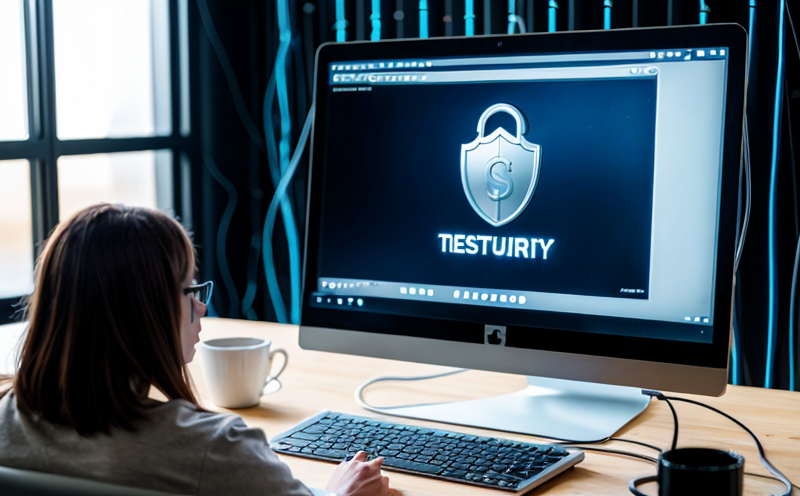Public Key Infrastructure PKI Testing in Networks
In today's interconnected world, ensuring the integrity and security of network communications is paramount. Public Key Infrastructure (PKI) plays a crucial role in providing secure data exchange between parties over the internet or other networks. PKI relies on cryptographic keys—public and private—to verify the identity of users and entities and ensure that information exchanged remains confidential and unaltered.
The integrity and security of network communications are critical for organizations across various sectors, from healthcare to finance, where sensitive data is frequently transmitted. By implementing robust PKI testing in networks, organizations can identify vulnerabilities and weaknesses that could be exploited by malicious actors, thereby safeguarding their operations and reputation.
PKI includes a range of components such as certification authorities (CAs), digital certificates, certificate revocation lists (CRLs), and online certificate status protocols (OCSP). Testing these elements is essential to ensure that they function correctly, comply with relevant standards, and maintain the security of network communications. This testing typically involves several phases:
- Key generation and management
- Certificate signing requests (CSRs) validation
- Digital certificate issuance and revocation
- OCSP and CRL testing
The testing process involves simulating various attack vectors to identify potential weaknesses in the PKI setup. This includes testing for man-in-the-middle attacks, brute force attempts on encryption keys, and other common vulnerabilities that could compromise network security.
By conducting comprehensive PKI testing, organizations can ensure that their digital certificates are valid, up-to-date, and issued by trusted CAs. Additionally, regular testing helps to identify any misconfigurations or outdated components that need to be addressed promptly to maintain the highest level of security.
The importance of PKI cannot be overstated in today's digital landscape. Organizations must continuously monitor and test their PKI infrastructure to ensure compliance with relevant standards such as ISO 25068-1:2017, which provides guidelines for implementing and managing a PKI. By adhering to these standards, organizations can build trust among their users and stakeholders while minimizing the risk of security breaches.
In summary, Public Key Infrastructure (PKI) testing in networks is essential for maintaining secure and reliable communication channels. By conducting regular audits and tests, organizations can identify potential weaknesses and address them proactively, thereby protecting sensitive data and ensuring compliance with industry standards.
Why It Matters
The importance of PKI testing in networks cannot be overstated. In an era where cyber threats are on the rise, organizations must prioritize network security to protect their sensitive data and maintain trust with their stakeholders. PKI testing ensures that digital certificates are valid, up-to-date, and issued by trusted CAs, thereby enhancing the overall security of network communications.
Regular PKI testing also helps identify potential weaknesses in the PKI setup, allowing organizations to address these vulnerabilities proactively. This proactive approach is crucial for maintaining compliance with relevant standards such as ISO 25068-1:2017 and minimizing the risk of security breaches.
Organizations that prioritize PKI testing can build trust among their users and stakeholders while ensuring that sensitive data remains secure. By adhering to industry best practices, organizations can create a safer digital environment for all parties involved in network communications.
Customer Impact and Satisfaction
PKI testing has a direct impact on customer satisfaction and trust. By ensuring secure network communications, organizations can protect sensitive data and maintain the confidentiality of their operations. This not only enhances customer confidence but also protects against potential breaches that could lead to financial losses or reputational damage.
- Enhanced security for customers
- Reduced risk of data breaches
- Increased trust and confidence in the organization
- Potential reduction in legal risks
The proactive approach to PKI testing can lead to a significant improvement in customer satisfaction. By addressing potential vulnerabilities before they become critical issues, organizations demonstrate their commitment to excellence and reliability.
Environmental and Sustainability Contributions
PKI testing contributes to environmental sustainability by promoting secure and efficient network communications. By ensuring that digital certificates are valid and up-to-date, organizations can reduce the risk of data breaches, which in turn minimizes the need for costly remediation efforts.
Regular PKI testing also helps organizations comply with industry standards such as ISO 25068-1:2017, which promotes best practices for secure communication and reduces the carbon footprint associated with network infrastructure. Through proactive monitoring and testing, organizations can contribute to a more sustainable digital ecosystem.
In conclusion, PKI testing is not only essential for maintaining network security but also plays a crucial role in enhancing customer satisfaction and contributing to environmental sustainability.





